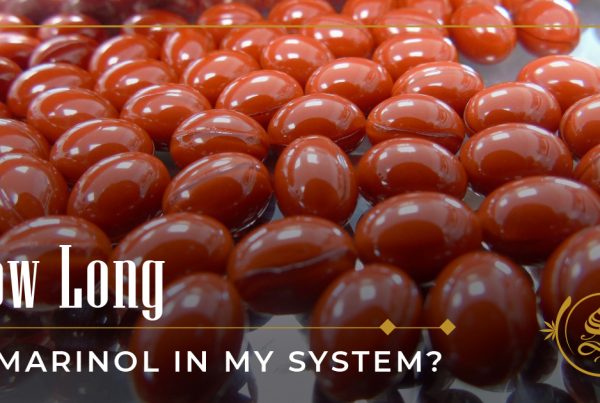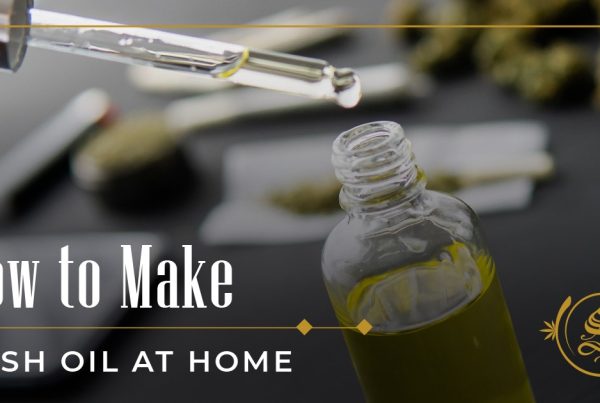Vaping is taking the world of cannabis by storm. Naturally, some weed users will always prefer smoking over vaping but you cannot deny the truth that vaping is a healthier way to use weed.
Many weed users are looking to avoid carcinogens and tar for a cleaner hit of cannabinoids. Vaporizers use convection or conduction heating instead of combustion, to release terpenes and cannabinoids into a smooth vapor.
Pre-filled THC cartridges are rising fast in popularity because of how convenient and portable they are. It may not always be easy for people to obtain these cartridges, especially in states that do not have medical cannabis programs. Luckily, those people have the option to make their own cartridges at home. Sure, you probably will not make them as well as top-notch cannabis companies, but it will still get the job done.
CBD cartridges are also available for medical patients or users that want the taste of cannabis without getting high from THC.
What is a vape pen?
Of all the ways to consume concentrates, using vape pens is quickly becoming the most popular. A newer technology, vape pens heat up vials or cartridges of weed concentrate. There is not much research done on the health benefits or hazards of vaping, but in general, people believe that they are a healthy alternative to smoking.
When it comes to portability, vape pens are as good as it gets. As you might be guessing, they are commonly shaped like a typical writing pen and therefore can be tucked away into your pocket or purse very easily.
Vape pens are made up of 4 different parts:
- Cartridge/tank: contains the vape liquid.
- Battery: the source of power for the device.
- Atomizer: this component is the primary source of heat that vaporizes the vape liquid.
- Mouthpiece: the vapor comes out of this component.
You can buy vape pens that have refillable cartridges or tanks, although these are generally more expensive than pens that use pre-filled cartridges.
What is vape juice?
Some people call it vape liquid or e-liquid, others call it vape juice or e-juice. Whatever you want to call it, do not get it confused with nicotine juice. CBD and THC juices are created with either a base of vegetable glycerin (VG) or propylene glycol (PG).
VG is an odorless, all-natural liquid that comes from plant oils and tastes a little sweet. It is more viscous than PG which means it produces denser vape clouds but can quickly cause coils to burn out. PG is also odorless and colorless. It is much less viscous than VG and therefore is a whole lot easier to clean out and refill your cartridges or tanks.
The cartridge of your vape gets loaded with vape juice and gets heated up to a range of temperatures between 300-450 degrees Fahrenheit. THC gets effectively vaporized around 325 degrees Fahrenheit. CBD needs to be vaporized at 350 degrees Fahrenheit in order for the benefits to be efficient.
Why make your own vape juice?
With the availability of pre-filled cartridges and vape juices manufactured by top-notch companies, you may wonder what the point of making your own juice is. If you are unable to buy vape juice in your area or if you simply like to make things yourself then vape juice is very much possible to create. It can be fun and you are also in the driver’s seat to determine exactly what flavors and strains you want in a liquid.
Another reason to make your own liquid is to know exactly what you are vaporizing. Juices from unreliable companies could possibly be made with unhealthy additives like Vitamin E acetate which is a chemical often added to vaping liquids to dilute or thicken them. Vitamin E acetate has been acknowledged as a potential toxin.
Unfortunately, you do not know exactly what is in vape liquid unless you get it tested at a lab or simply make it yourself.
If you grow your own weed then you are in a prime position to use your bounty of plant material to make vape juice. To obtain the best outcome, you will want to use high-quality plant materials. Decide on which type of glycerin you want to use as a base for your juice and what if any terpenes you may want to add for some extra flavor.
3 different ways to make vape juice
There are 3 simple ways to make your own vape juice. The idea is to extract THC oil from weed flower and then mix it with a base liquid such as VG, PG, or a Wax Liquidizer which is mostly used to create extracts.
The following techniques differentiate in time spent and level of difficulty, however, if you are able to obtain the proper equipment then you should be able to handle them all.
- Rosin extraction: Takes about 2 hours and eventually gets mixed with Wax Liquidizer.
- Long-term THC extraction: This process takes up to 3 months and is performed with vegetable glycerine and propylene glycol.
- Short-term THC extraction: This process takes about 3 hours and is also with VG and PG.
Overall these methods are pretty effective, but the rosin extraction is the quickest and safest especially if you already have the concentrates. However, if you are only starting with flower, you will need a rosin press which most people do not have and are rather expensive. Luckily, it is possible to press your flower with a hair straightener in a pinch.
Using the rosin extraction method that utilizes a hair straightener is the safest technique to do primarily because the two other techniques use solvents that are potentially dangerous. When these solvents are heated to extremely high temperatures they can degrade into formaldehyde which is a carcinogenic compound you should avoid breathing in.
Traditionally, a mix of polyethylene glycol (PEG), PG, and VG has been used. At very high temperatures, these all have the capability to degrade into compounds that are carcinogenic except for VG. It is possible to create a vape liquid using just vegetable glycerin, except it often becomes inferior in quality and taste.
Method #1: Rosin extraction
With this technique, you are taking fresh cannabis buds and pressing rosin from them using a hair straightener, collecting the rosin into parchment paper. You can take that rosin and heat it up while mixing in a few drops of “The Potion” Terpene Blend. The blend of terpenes is used for a diluent for extracts, developing an ideal level of viscosity for vaporizing your extracts.
You will need the following supplies:
- Weed flower (whole buds)
- Parchment paper
- Hair straightener
- Small glass container for mixing
- Lighter
- 1 g bottle of “The Potion” Terpene Blend
- Dropper (for adding the terpene blend)
- Vape pen cartridge syringe (for adding the liquid to your vape)
- Metal dab tool (for handling the concentrate)
The final product you will have should be “gunkier” than typical pre-filled cartridges or vape juices. Try using a cheaper disposable vape if you are concerned with ruining your expensive concentrate vape.
The steps to rosin extraction:
- Grab a bud. It is crucial that the bud is tightly packed and dense. Do not include any stems or seeds. Use at least an eighth of fresh nugs to produce enough vape juice to use. An eighth of weed should produce about 0.4-0.6 grams of rosin. You will have to press many different nugs separately to get this much.
- Prepare your hair straightener. 250 degrees Fahrenheit is about the temperature you want to press your buds at. If your straightener does not operate at this low of a temperature then just press your buds for less time and turn off the straightener to cool off in between presses.
- Take a piece of parchment paper and fold it in half. Place a nug in between the fold. When the hair straightener is hot enough, place the paper in the straightener and press down as hard as you can for a few minutes or until the nugs are a brownish color. You should be left with some resin on the parchment paper.
- Repeat steps 2-3 until you have pressed an eighth of cannabis.
- After pressing all of your buds, take the parchment paper and collect the rosin from it. Placing the paper in the freezer or refrigerator for a few minutes will help solidify the resin, making it easier to remove. Scrape off the rosin with your metal dab tool.
- Put the rosin into your small glass container.
- Next, add 8 drops of “The Potion” Terpene Blend to the container using a dropper bottle. 8 drops are enough for around 0.5g of rosin.
- Once you have added “The Potion” to the rosin, use a lighter to heat the glass container for a few seconds until the mixture starts to bubble. If the mixture gets too hot then you will cook away all the terpenes and destroy the flavor of the vape liquid.
- Stir up this mixture using your dab tool as soon as it starts bubbling.
- Next, take your syringe and extract the juice and add it to your vape pen. Your creation is now ready to try!
Method #2: Vegetable glycerin extraction (long-term)
This method takes a very long time, about three months! Because of the duration it takes, this is not the most popular method but it is maybe the simplest. The idea is to break up raw buds and then distill them in food-grade vegetable glycerin, stirring it every several weeks.
You will need the following supplies:
- Weed flower (an eighth of cannabis will produce roughly 30-60 mL of vape liquid. Using a high-grade cannabis concentrate will produce an even more potent juice)
- Vegetable glycerin
- Aluminum foil
- 2 airtight glass jars (such as a Mason jar)
- Baking sheet
- Oven
- Cheesecloth
- Fine mesh strainer
- Metal butter knife (for stirring)
- Rubber spatula (able to fit inside the mesh strainer)
- Freezer
First, break up your weed flower. Do not use a grinder because you want coarse flower not fine. Much of it will not filter out during refinement if it is too fine of weed and the result will leave you with bud in your vape juice. Most other methods to breaking up your buds will suffice.
The steps are:
- Break up your nugs into small, coarse pieces.
- Put a layer of aluminum foil over the baking sheet and place your nugs spread out onto the sheet.
- At a temperature of 250 degrees Fahrenheit, put the sheet into the oven and bake your buds for around 30 minutes. The THCA in the raw buds will be decarboxylated into THC.
- After 30 minutes, remove the buds from the oven then allow them to cool down.
- Place your decarbed weed into a glass jar with a lid that seals shut, and pour just enough vegetable glycerin over them so that it covers the weed. Avoid using too much VG because it will dilute your final product, leaving it less potent.
- Stir around the mixture, close the lid, then write the date on the jar so that you can keep track of the distillation. Put the jar in a dry, dark, and cool place for around a month.
- Following a month, open the jar and stir the contents. In order to encourage the extraction of THC, add a tablespoon of fresh VG, stir it once more, and set it aside for another month.
- Repeat this exact process two more times.
- After about 3 months, open up the mixture and stir it up thoroughly with your butter knife. Next, place the fine strainer over a clean glass jar and pour your mixture over the strainer. With your rubber spatula, salvage as much of the mixture as possible.
- Toss the weed from the strainer and rinse it off. With at least four layers of cheesecloth, cover your strainer.
- Pour the liquid mixture through the cheesecloth, letting it filter through into a clean glass jar.
- Remove the remaining liquid trapped in the cheesecloth by squeezing it and then you are finished!
Method #3: Vegetable glycerin extraction (short-term)
This is a very similar process to the long-term method, except this time you heat the weed-VG mixture in an oil bath to make the process quicker.
Here are the materials needed:
- Weed flower
- Vegetable glycerin
- Vegetable or canola oil
- 2 Pyrex jars/dishes that are stove safe or hot plate (one large and one smaller)
- Wire mesh strainer
- Cheesecloth
- Two kitchen thermometers
- Stovetop
- Metal butter knife (for stirring)
- Rubber spatula
The steps are:
- Break your weed up into small, coarse pieces and put it into the smaller heat-safe glass jar, such as a Pyrex.
- Pour vegetable glycerin over the nugs just enough to cover them. Stir up the mixture to distribute it evenly.
- Pour the vegetable or canola oil into the larger Pyrex dish; you only need enough to submerge the bottom inch of the smaller Pyrex dish. Place the oil on the stove or a hot plate and place the thermometer sensor inside. Heat it up to reach a stable 220 degrees Fahrenheit.
- When you hit that temperature, put the dish with the mixture into the hot oil bath. Use a different, clean thermometer for this jar, and try to maintain the inner jar at a temperature of about 180 degrees.
- When you have achieved the proper temperatures, let the dishes sit around for roughly 30 minutes, while frequently stirring the weed-VG mixture.
- After half an hour, take the glass jar out of the oil bath and leave it to cool down. Take your mesh strainer and put it over a clean glass jar, then pour the weed-VG mixture through the strainer. Using your rubber spatula, get as much of the liquid out as possible. This is your “first-run.”
- Take those same weed nugs and put them back into a glass jar, and add fresh VG to repeat steps 2-7. Do this for two more runs, for a total of three runs.
- After three total runs, filter out any remaining plant material using a cheesecloth. Rinse the strainer and cover it with at least four layers of cheesecloth. Pour the weed-VG mixture over the cheesecloth and into the clean glass jar. With the rubber spatula, press as much liquid out as possible.
- After you have used the cheesecloth to filter the liquid, cook the refined THC liquid in your oil bath at 220 degrees for around 30 minutes to decarboxylate the THCA into THC. To do this, raise the temperature of the larger bowl with the oil bath. Do not exceed 220 degrees for the THC liquid.
- After 30 minutes, take the THC liquid off the heat and let it cool down before adding it to your vape.






